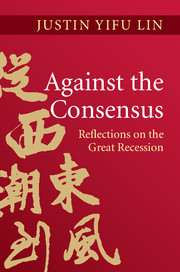Book contents
- Frontmatter
- Contents
- List of figures
- List of tables
- List of boxes
- Preface
- Overview
- Part I What Caused the 2008–9 Global Crisis?
- Part II A Win-Win Path to Recovery
- Part III How Poor Countries Can Catch Up: Flying Geese and Leading Dragons
- Part IV Toward a Brave New World Monetary System
- 12 The evolution of the international monetary system
- 13 Emerging pressures and policy challenges
- 14 (In)stability of the emerging multiple reserve currency system
- 15 The thinking behind the main reform proposals
- 16 Costs and benefits of major reform proposals
- 17 A proposal for a new global reserve currency: paper gold (“p-gold”)
- 18 Why it still matters
- References
- Index
14 - (In)stability of the emerging multiple reserve currency system
from Part IV - Toward a Brave New World Monetary System
Published online by Cambridge University Press: 05 June 2013
- Frontmatter
- Contents
- List of figures
- List of tables
- List of boxes
- Preface
- Overview
- Part I What Caused the 2008–9 Global Crisis?
- Part II A Win-Win Path to Recovery
- Part III How Poor Countries Can Catch Up: Flying Geese and Leading Dragons
- Part IV Toward a Brave New World Monetary System
- 12 The evolution of the international monetary system
- 13 Emerging pressures and policy challenges
- 14 (In)stability of the emerging multiple reserve currency system
- 15 The thinking behind the main reform proposals
- 16 Costs and benefits of major reform proposals
- 17 A proposal for a new global reserve currency: paper gold (“p-gold”)
- 18 Why it still matters
- References
- Index
Summary
Events in the global economy during 2008 to 2011 imply that a move to a multiple reserve currency system is inevitable. Without strong policy coordination and macroeconomic policy discipline among the reserve currency countries, however, this new system could prove unstable, to the detriment of economic activity and employment across the globe.
Moving forward, the international monetary system and the global economy face three possible outcomes.
One is the continuation of the current nonsystem, with a future punctuated by occasional regional and global financial crises, as has been the case since the 1970s, and with the distinct possibility that the system will collapse.
A more likely scenario is that the current international monetary system, centered on the US dollar, will evolve into a multiple reserve currency system supported by three major currencies – the US dollar, the euro, and the yuan – along with smaller currencies, such as the yen, sterling, and the Swiss franc, with the currencies of other large emerging economies (such as Brazil and India) possibly joining later.
Alternatively, there could be a collective decision by major global economies to reform the international monetary system and move toward a new supranational currency along the lines of Keynes’s bancor (see Chapter 15).
- Type
- Chapter
- Information
- Against the ConsensusReflections on the Great Recession, pp. 166 - 181Publisher: Cambridge University PressPrint publication year: 2013



